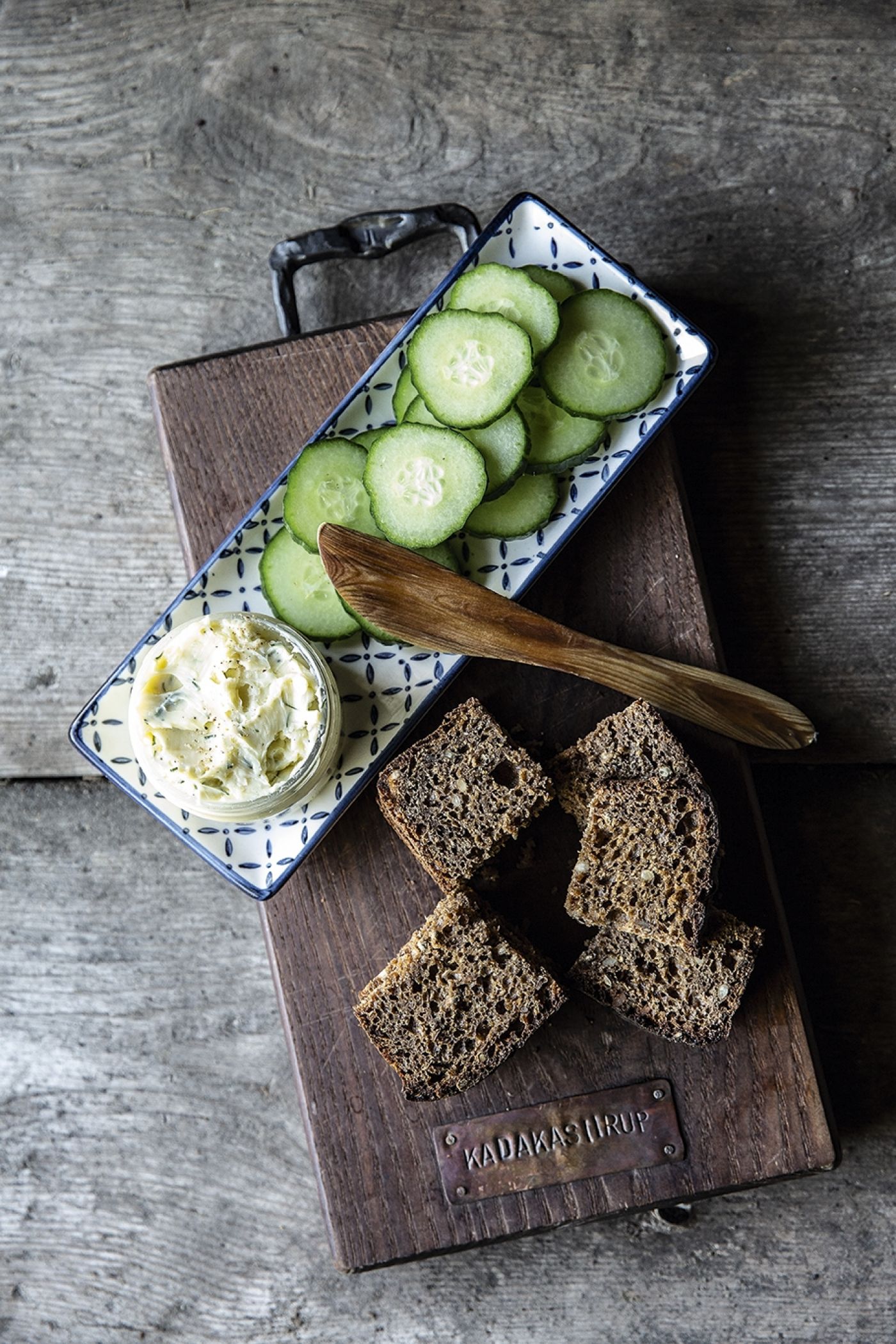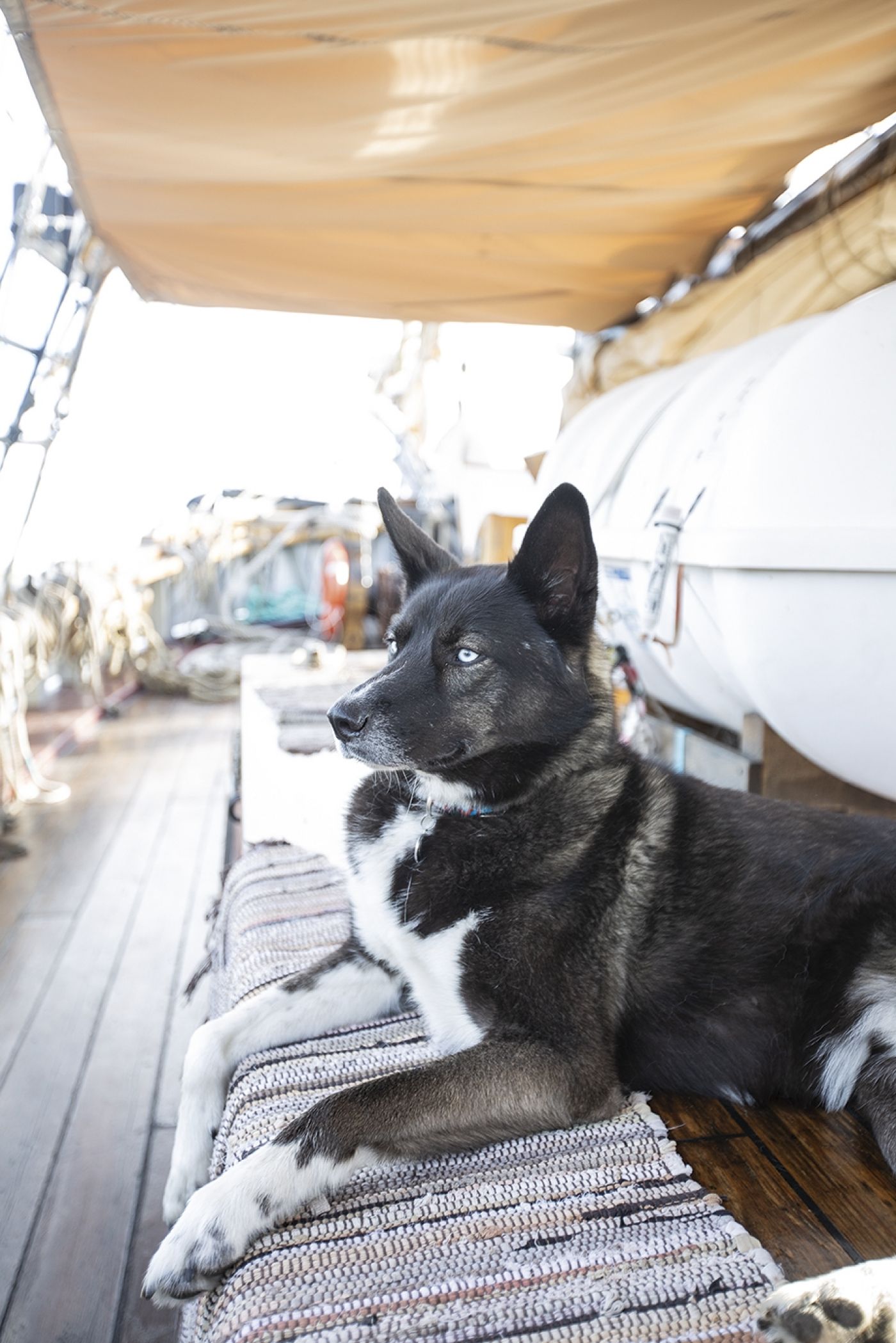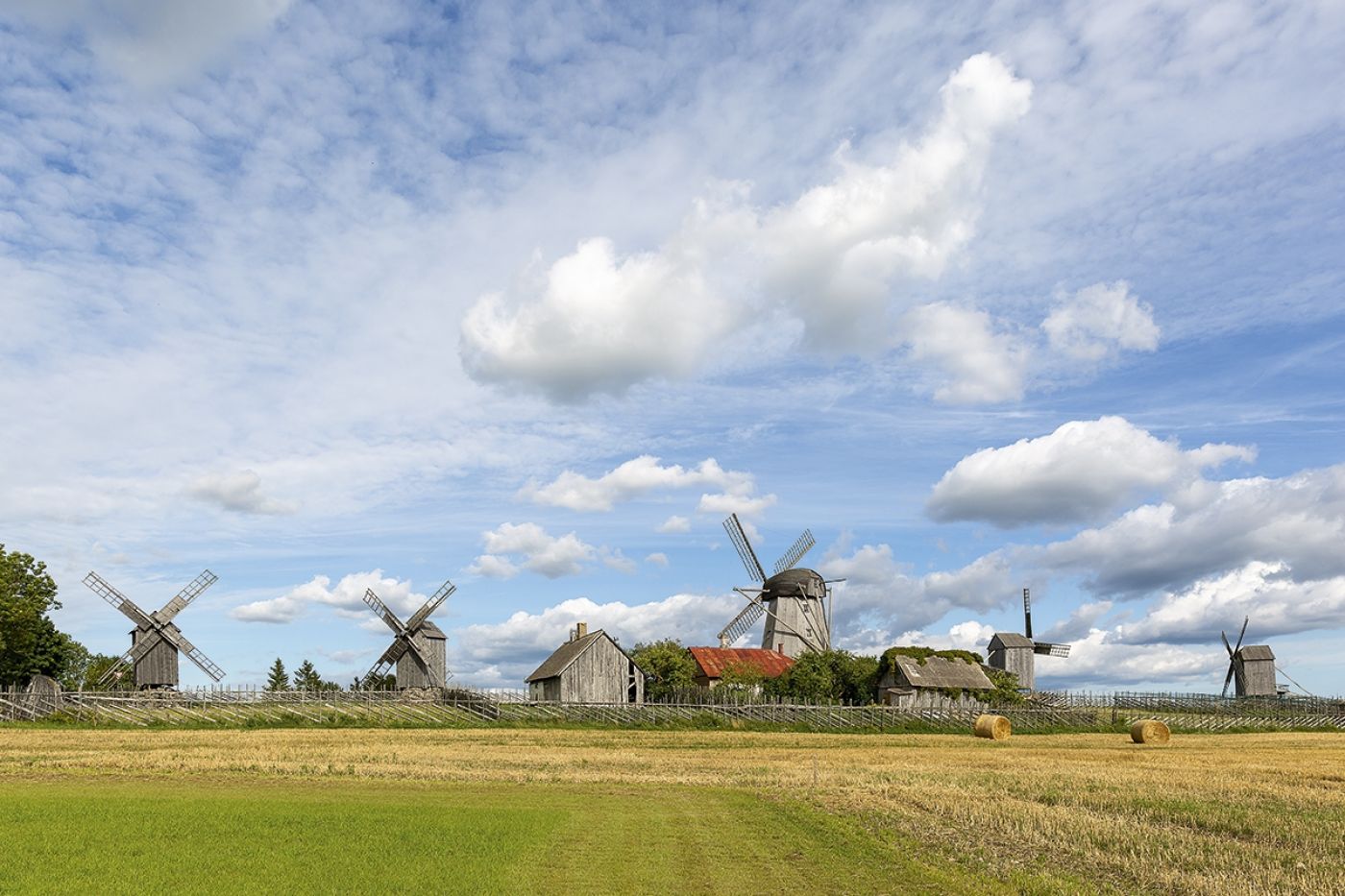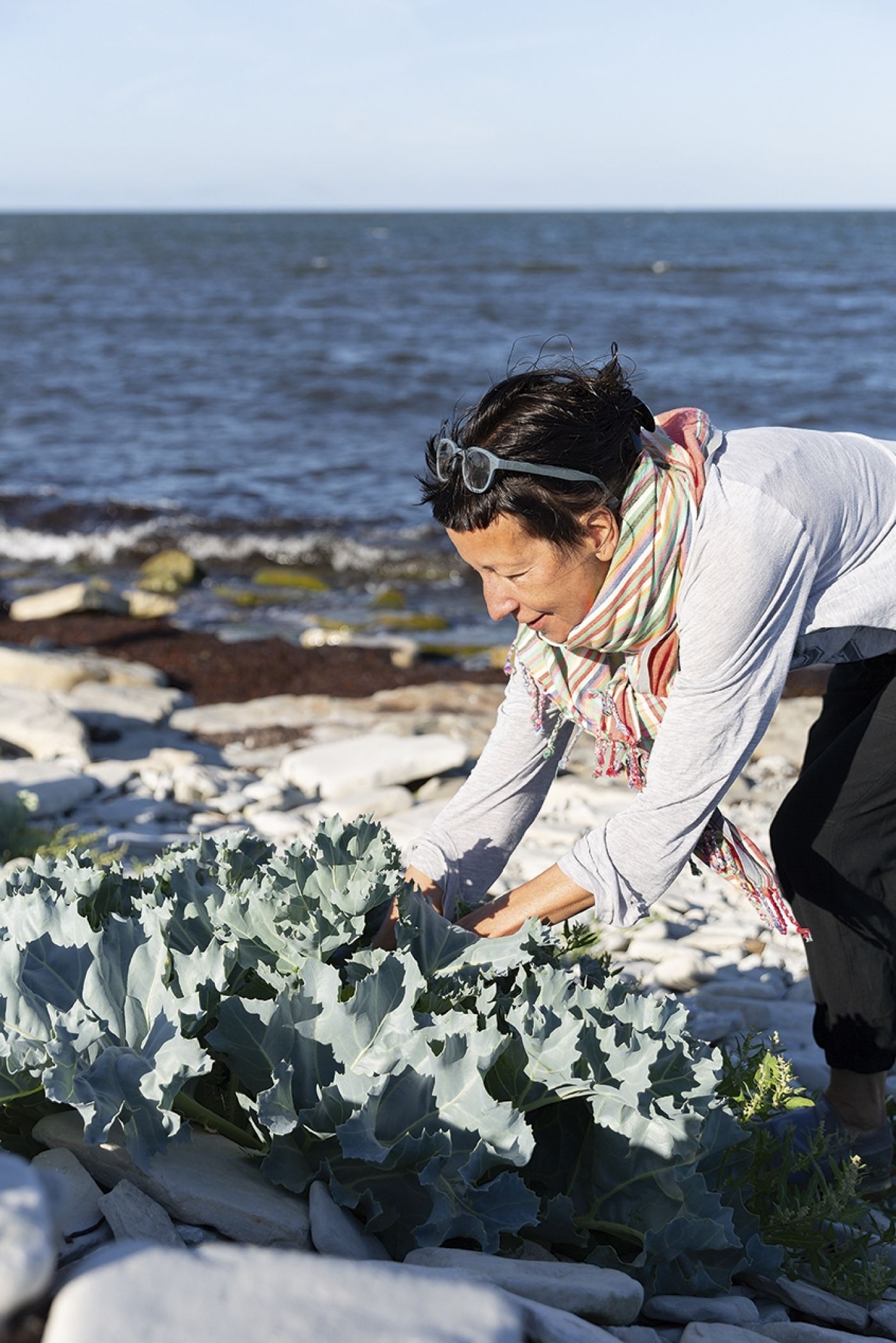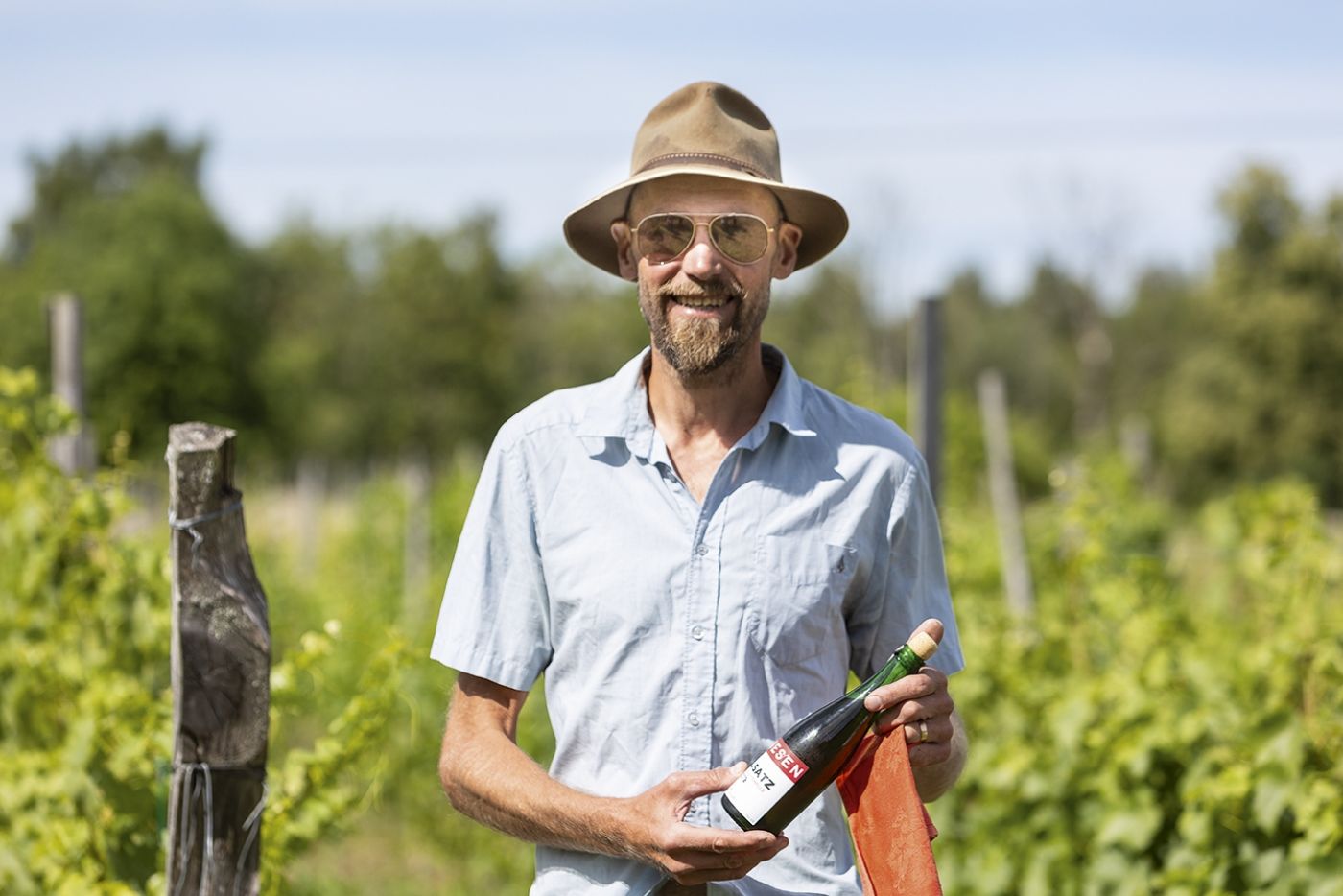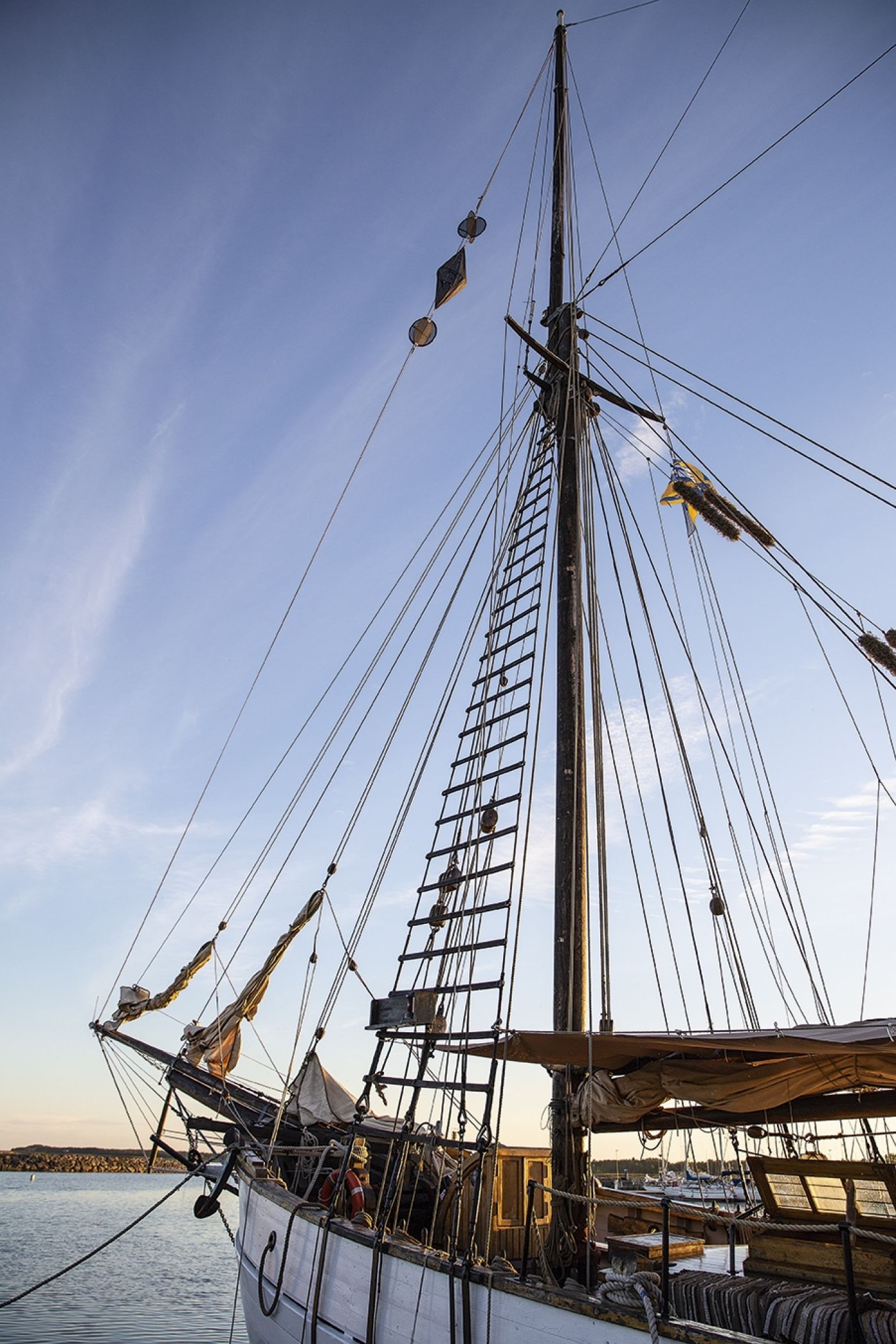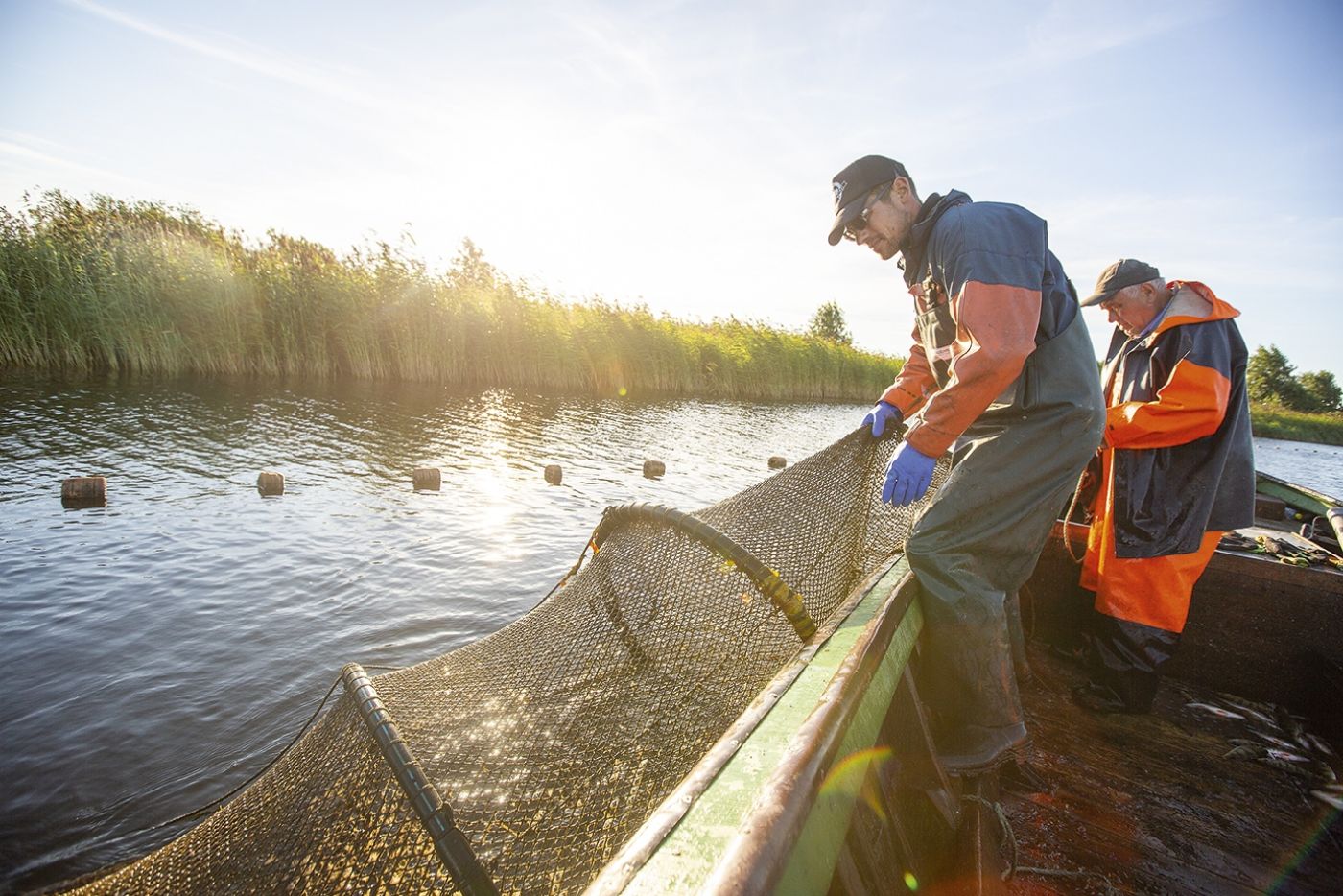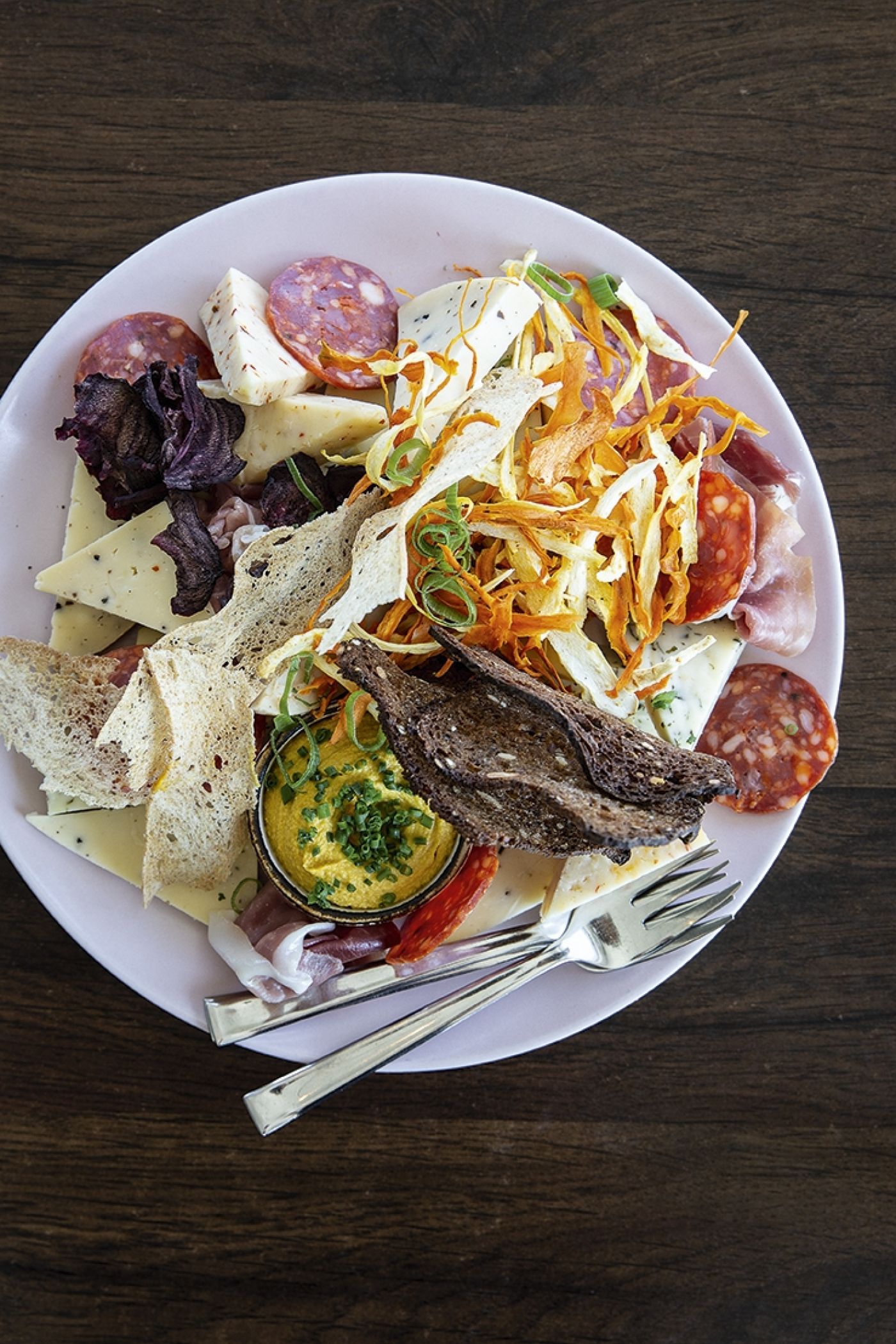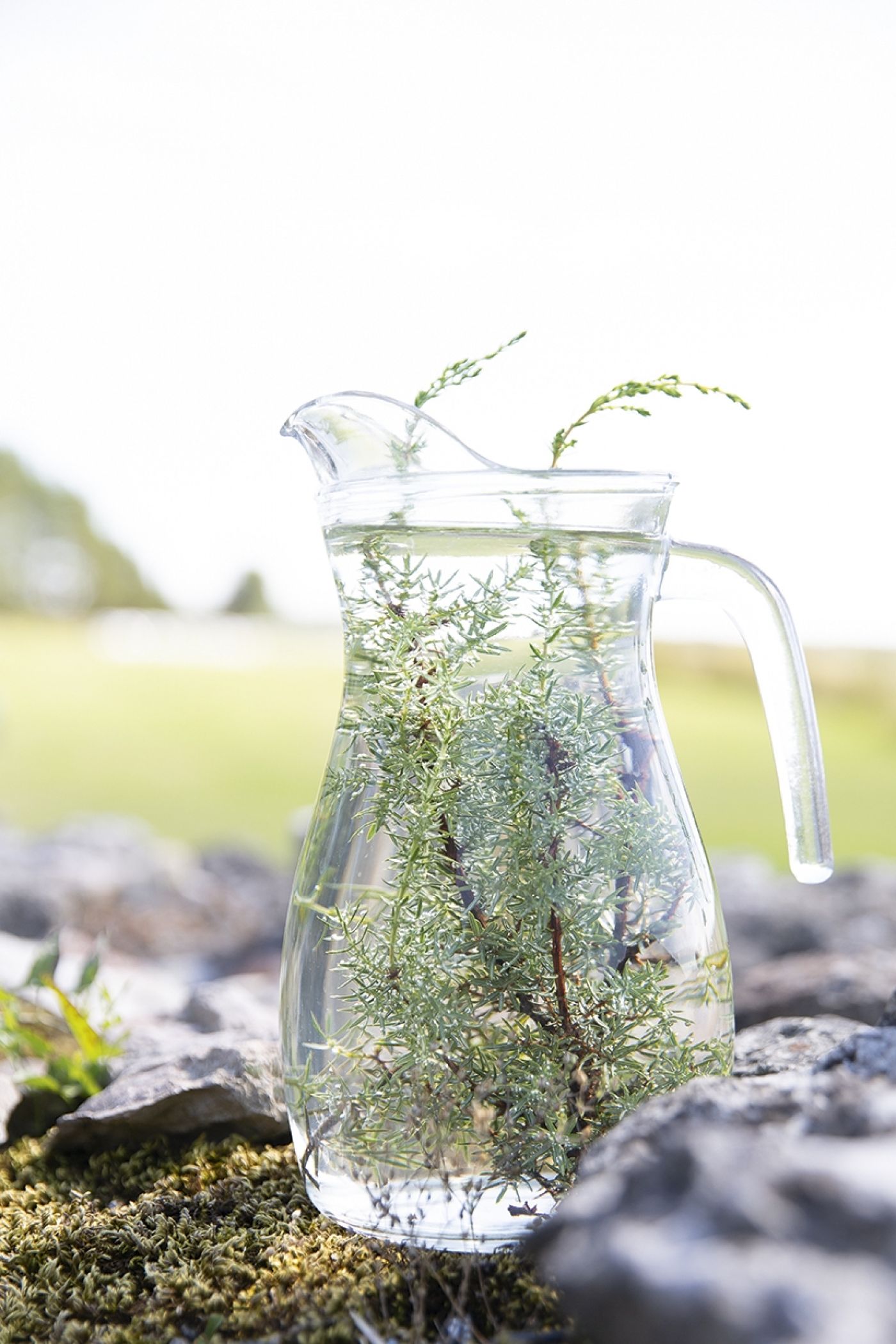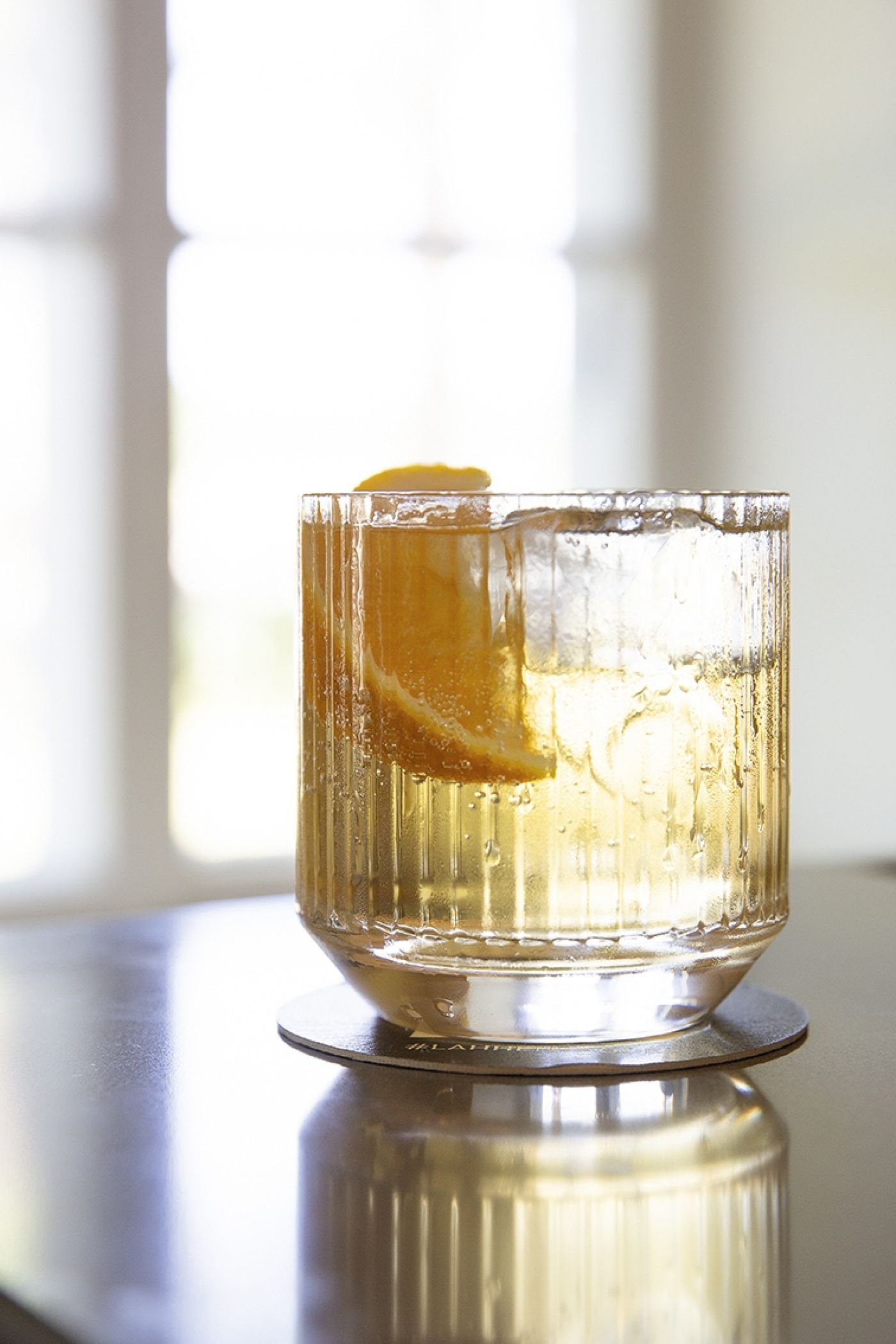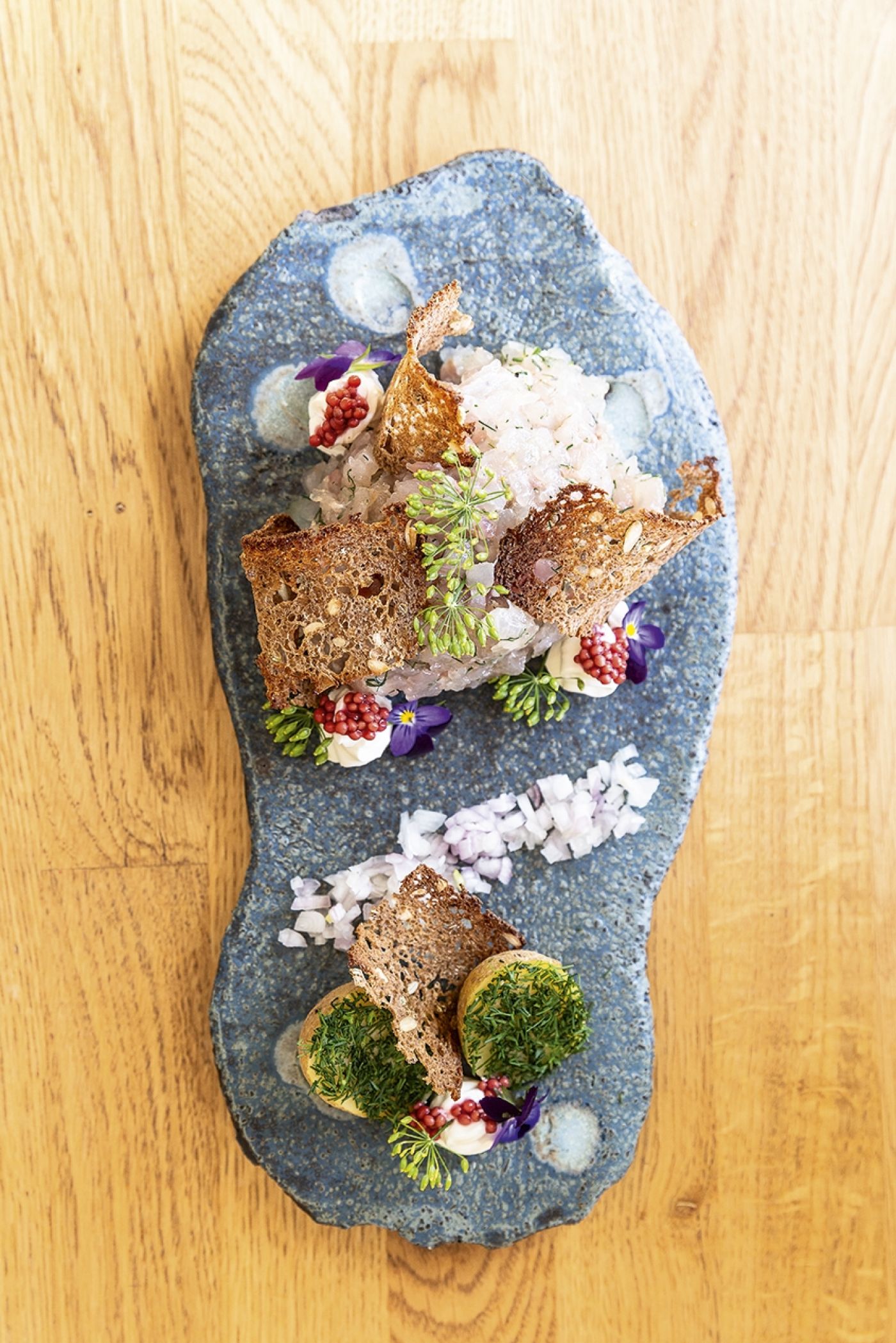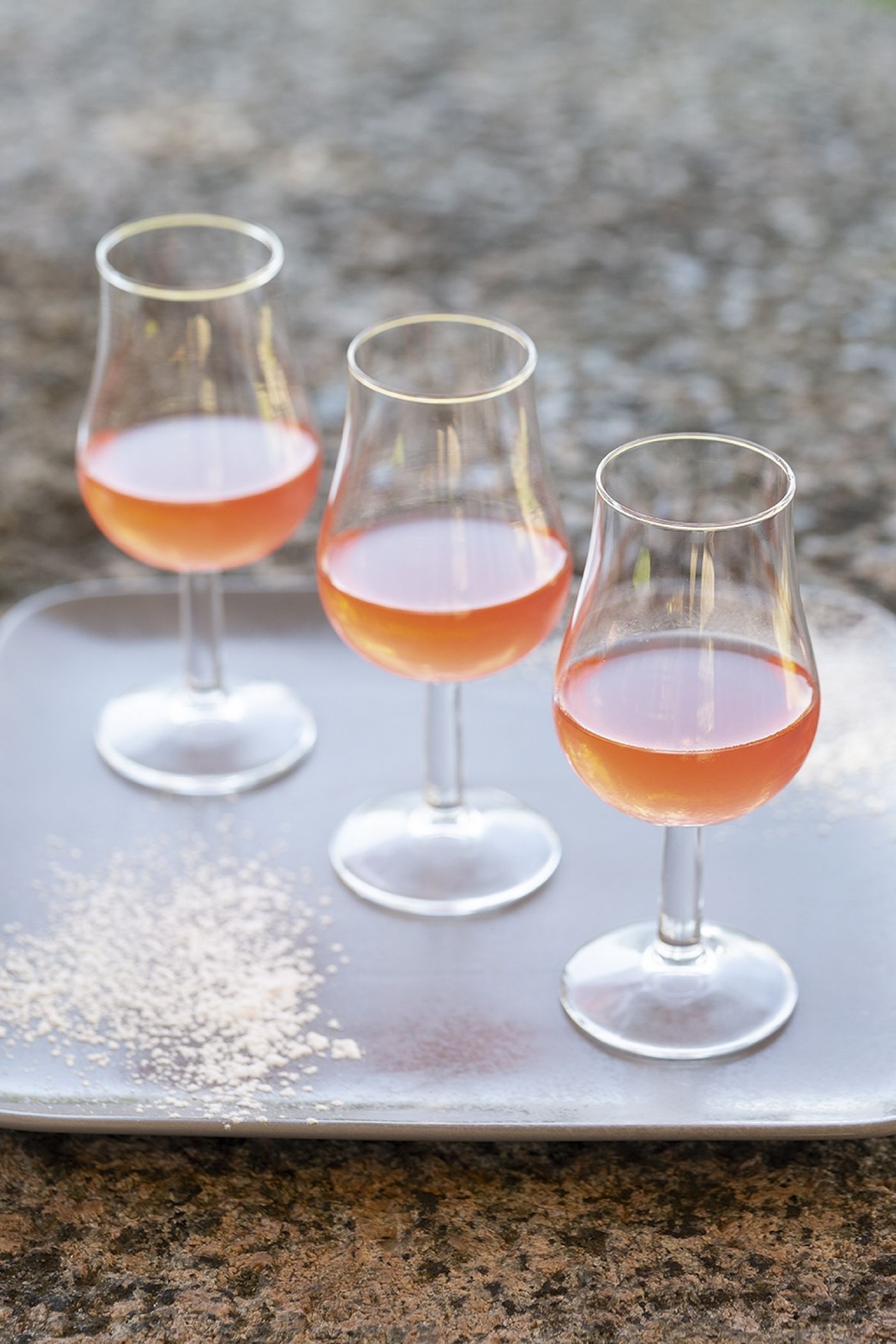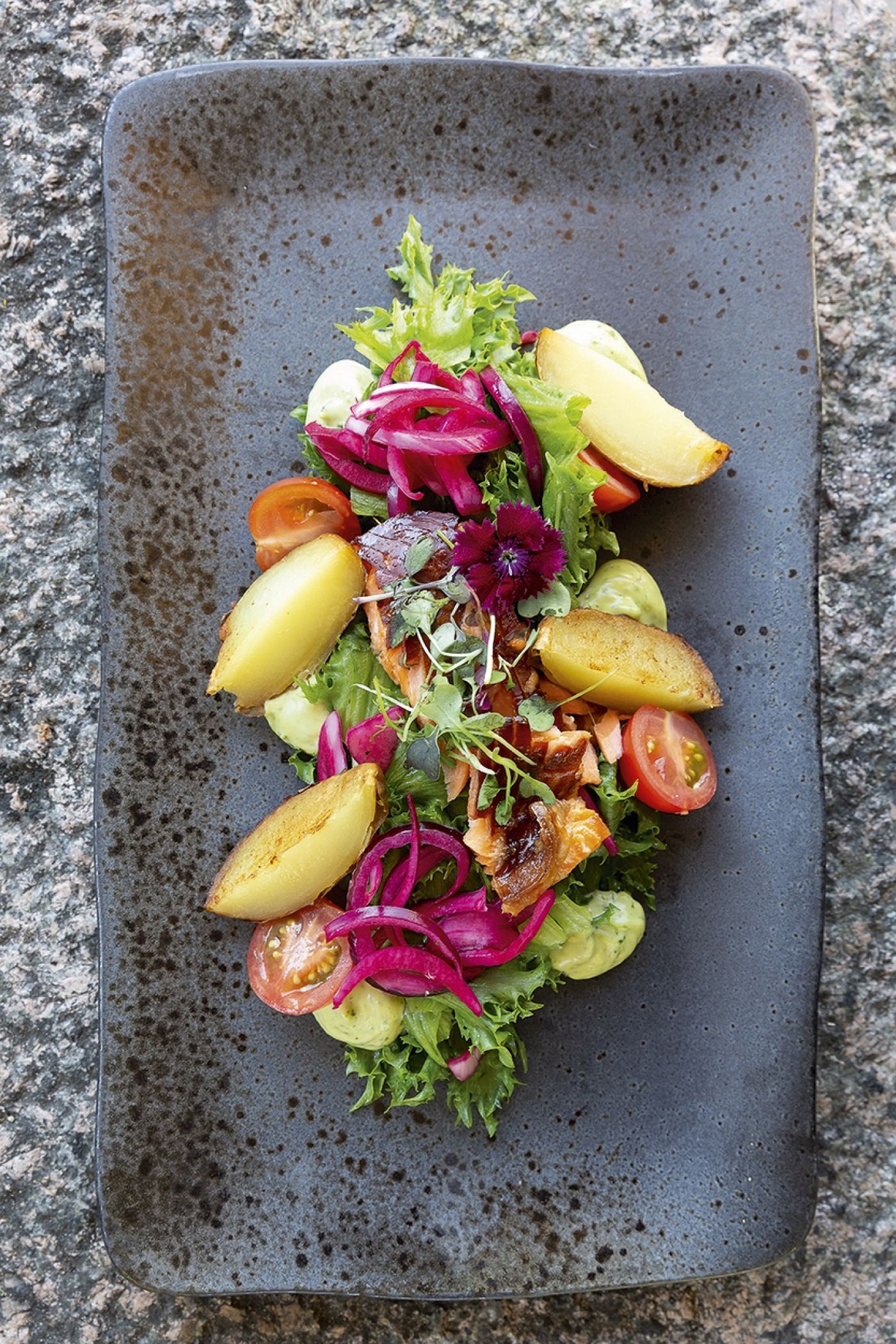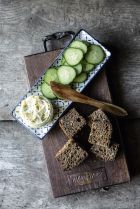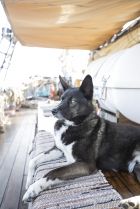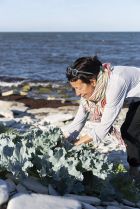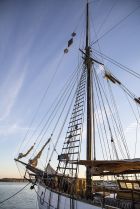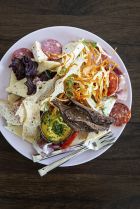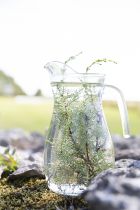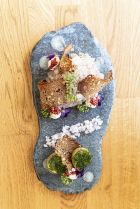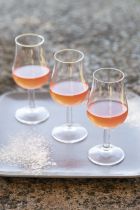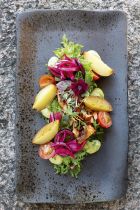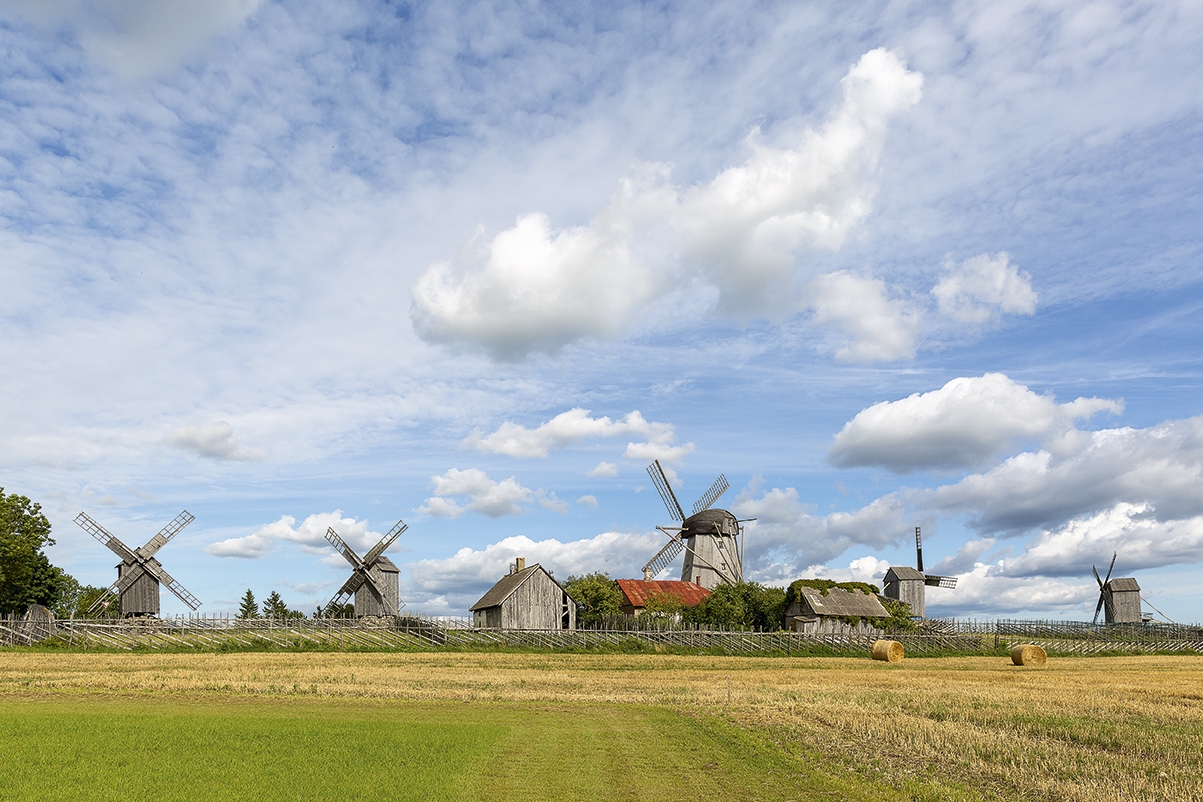
Food and Travel Review
The Estonian islands of Saaremaa and Muhu have made a virtue of necessity: once cut off, foraging became an art. Now a cuisine of tart vinegar, salt and smoke, based on abundant mushrooms, juniper and fish, is inspired by the creativity of their forefathers.
Words by Jo Davey. Photography by Sarah Coghill.
Peke Eloranta stands among his vines, a bottle in one hand and a garden trowel in the other. The rattle and hum of busy wings accompanies his finely-tuned task. He grips the bottle, positions the trowel and severs the sunlit neck in one swift strike, an arc of sparkling wine streaming on to the bright grass.
‘That’s how we do it in Muhu.’
Muhu is a small island connected to Estonia’s largest, Saaremaa, by a blink-and-you’ll miss-it bridge. Balanced like a lid on the Gulf of Riga, these islands seem like a cartographer’s afterthought; an Estonian leftover they didn’t quite know where to put. Eyes tend to blend Saaremaa and Muhu into the mainland with insouciant ease. They could be called forgotten – for a long time they were – but for that they’d have to be known first.
Muhu is where Peke started Muhu Veinitalu winery, planting his first 60 vines in 2012 at his in-laws’ old summer house, with a vision of creating the world’s northernmost wine tourism. An admittedly mad scheme on an island with desperately poor soil, severe winters and a viticulture based entirely on berries.
‘Making wine with grapes here is just a bigger challenge,’ Peke explains. ‘It’s quite interesting to be a sort of pioneer and create it yourself, because nobody can come here and tell me what to do. It’s so unique – the conditions, the terroir, the climate, everything.’
Agrarian sabrage complete, Peke pours Matiesen Segusats into glinting glasses. Like Veinitalu’s industrious garden, Segusats is remarkably floral and sweet: a nose that nears bubblegum but a palate tempered by fresh hay and yeast. It’s delightfully drinkable, fresh in Muhu’s morning sun. ‘It was actually disgorged and taken off the lees two hours ago, only for you,’ he says.
Peke, originally from Finland, has the aura of a man who would master anything if you gave him five minutes to figure it out. A hipster-ish vision of skinny jeans, buff fedora, aviators and halfkempt beard, he’s effortlessly cool and it’s easy to see how he’s inspired others to make wine in Muhu. The wine scene here is still in its infancy, with nine winemakers and only seven with vines. Growers face cold climate viticulture, which means planting varieties that ripen swiftly and tolerate the harsh winter.
Peke’s seen multiple people come and go. He watched with envy as a fellow Finn planted 1,500 vines with shiny new equipment, but soon pitied his competitor when he saw the vines he was using. Within a single year, 50 per cent of them had died; another 2,500 were planted and by year two, 75 per cent were dead. ‘The place was wrong, but probably the biggest mistake he made was that he didn’t come to the same small island to ask advice,’ says Peke. ‘Instead, he hired expensive consultants from France, who taught him how they do it in France. He planted like they plant in France, so they froze the first winter. Now he’s given up – £85,000 gone, at least.’
Peke’s vines are a cross of Russian and Latvian grapes, varieties that rarely pass the Baltic borders for good reason: ‘They make terrible, terrible still wine,’ he says. But experimentation with traditional method sparkling wines resulted in interesting, novel – and, importantly, delicious – fizz. Red wine still eludes him, though. Famously hard to produce in cold climes, Peke’s attempts thus far have been thin, sharp, near sour, but he’s determined. He has sunshine and soil on his side after all: Muhu’s mix is a perfect blend of dolomite and limestone.
What works for wine, though, is useless for everything else. ‘Terrible soil’ is a regular refrain on Saaremaa; alvar ecosystems and swamp mean farmers like Rautsi, the island’s best producer, toil hard for every crop. The drastic seasons don’t help either. Saaremaa’s
food culture has been formed through scarcity: its fresh produce is pickled and preserved for the barren winter, creating a cuisine of tart vinegars, salt and smoke. Add in a past that’s nothing short of operatic and you’ve got an incredibly unlikely gourmet bolthole.
Once a home of pirates and Vikings, Saaremaa was conquered by Catholic crusaders in 1227, whereafter centuries of subsequent rulers toppled in like dominoes. Sold to Denmark, ceded to Sweden, handed to the Russian Empire, then conquered by the Imperial German Army, Saaremaa enjoyed two brief decades of republic independence before being annexed by the Soviets in 1940. Invaded by Nazis and reoccupied by the Red Army, Saaremaa was finally declared a restricted zone to non-civilians.
Shut to all but islanders and Soviet troops, Saaremaa lived in forgotten silence until 1989. What eventually emerged from the oppression and paucity was a proudly cobbled together, defiantly plain cuisine. With rivers overfished by troops and locals lacking trade, influence and ingredients, many of the inhabitants just made do.
‘In those times, we didn’t have supermarkets: you had to be creative,’ explains Alar Aksalu aboard his floating restaurant on the 1926 schooner Hoppet. ‘Since there were no shops, you had to forage. I don’t want to say Estonian food is bland or tasteless, but in the old times, we didn’t have anything. Only pepper and salt.’
After independence, variety trickled, then torrented, across the channel into Muhu and Saaremaa, but devastating damage had been done. A whole generation had lost out on learning how to cook traditional food. Today, however, the next generation of chefs, brewers and producers are returning to the solitude and strong community of Saaremaa, determinedly rediscovering their grandparents’ dishes along the way.
'Aboard an old schooner, Hoppet combines traditional elements, lcoal ingredients and global techniques and the resulting paltes are a rich rainbow of colour and flavour'
The unassuming, soft-spoken Alar is the island’s most decorated chef. His face adorns bags in supermarkets along the coast, he cooks aboard a polished piece of maritime history, and Rautsi Farm happily plant his pick of crops for the year. His food combines traditional elements, local ingredients and global techniques, and the resulting plates are a rich rainbow of colour and flavour. Sweet Rautsi tomatoes are cut with salt, creamy Estonian mozzarella and a herb oil of parsley, chives and dill. Tricolour carrots are pickled in whip-thin slices, with ginger-hot ramson roots playing tug-of-war with apple vinegar and popping pepperoncinis. It’s fresh and phenomenal, and hard to believe that the soil here was ever anything other than lush.
‘Estonians have marinated everything: carrots, cucumbers, tomatoes, apples… We take chanterelles, marinate them, boil them with onions, garlic and carrots. Or I fry them with butter, take a vacuum bag and freeze for use in wintertime. Grandma-style recipes make apples into compotes. We salt and smoke things. That’s Estonian food culture,’ he says.
Hoppet sits in the harbour at Kuressaare, Saaremaa’s small but pretty capital. From its place among the rustling reeds, you can see Kuressaare Castle’s great squat towers poking their terracotta heads above the birches. Dinner culminates in 72-hour Saaremaa venison, a culinary symphony of succulent meat, Rautsi vegetables and chimes of ever-present dill. The red wine sauce, thick and full, is mopped up with Alar’s beetroot bread as Hoppet’s dog throws plaintive doe eyes from the deck.
Alar is just one of hundreds of locals foraging for ingredients. There’s an unofficial motto on this island, where sweeping forests of pine and mantled moss hide rusting Soviet ruins.‘Saaremaa people will give you the shirt off their back, but they willnever tell you where they pick their mushrooms,’ says Alar.
It’s exactly the kind of offbeat axiom one expects to find in a barely-known Baltic land, but it’s remarkably apt. Behind the tatters of the Iron Curtain lies a close-knit, compassionate population still recovering from Soviet wounds and decades of fending off starvation through foraging.
‘I’m always waiting for autumn because I’m kind of crazy for collecting all the mushrooms for the restaurant myself,’ says Toomas Leedu, Chef at Ku-Kuu. ‘I have to collect about 200-300kg of mushrooms, but I don’t like to gather simple mushrooms you can find in other restaurants, because everyone here forages. I have my secret places. It’s a hell of a job to collect so many myself, but I can’t take someone with me – or else they would be gone next year.’
His restaurant is one of the three oldest still operating in Kuressaare. Its 1889 butter-yellow building is embedded in the one-time parading park, its terrace curving round the castle moat. Despite Toomas’s love for mushrooms, Ku-Kuu is famed for its fish – the highest accolade on an island where fish is the staple. Locals pour through his door for plates of white fish tartare decked with beetroot, mustard seeds and a deft touch of dill,
or locally caught monkfish, its soft lemony flesh mottled with blue-black threads. Fish was never actually meant to be Ku-Kuu’s speciality, but the locals decided otherwise. As Toomas says, it turned into a fish restaurant ‘all by itself’.
Although locals spearhead Saaremaa’s culinary journey, outside innovation has been key to its ongoing evolution. Pilguse Residency, an astonishing eco-conscious manor on the outskirts of Karala-Pilguse nature reserve, is run by half-Swedish, half-Estonian Maria Tamander and her Scottish husband John Mathieson. They first came to Saaremaa in 1994, when their forested home still housed a huge Soviet training camp.
‘They had prison cells in the woods here,’ Maria explains as we pass a kaleidoscope of greens, where stately pines cast shadows on carpets of berries and moss. ‘Quite a lot of these woods were replanted by Russians in the Sixties. There was a shortage of materials and pine is the quickest growing tree. This was oak forest before, and that’s what we’re trying to reintroduce.’
It’s not just oak they’re resurrecting. Together with a fungal professor from Tartu, Maria and John found wild truffles in Saaremaa’s boar-filled woods. They had the oaks analysed and their acorns sent to France for cultivation and spore injection. The hope is that this year they will start to see results and will soon be able to use local truffles in Pilguse’s menu.
Their kitchen is run by French chef Elisabeth Passédat, whom Maria met working in London. Served up in Pilguse’s artistic dining room of wooden banquet tables, immense vases of fluffy reeds and warm tapestries, Elisabeth’s dishes brilliantly merge local ingredients with international flair. Her Asian salad uses honey from their own bees and sea cabbage picked from the nearby shore, as well as sesame oil, ginger and soy. The near-divine aubergine dip, served with salt-sprinkled crispbreads, is made in their traditional hot smoker, while her bagels are topped with Saaremaa smoked cheese, a slather of soured cream and tangy pickled girolles, chanterelles and carrots.
‘I think you have traditionalists in Estonia, much like in France, and we respect that and keep part of the menu traditional,’ says Elisabeth. ‘But then you also evolve with the times. We stick to local produce as much as possible but sometimes you want to have other flavours. You can’t restrict it so much that everyone is doing the same as everybody else.’
Individuality is certainly part of Saaremaa’s character. The islanders make a point of differentiating themselves from the ‘reserved’ mainlanders. For decades, locals only had each other to rely on, and they held fast to their strong sense of community as they slowly and carefully rejoined the modern world. Maria claims that, in some ways, they benefited from the Soviets cutting them off: ‘We’ve caught up tastefully.’
Tasteful is certainly right; Saaremaa’s flat expanse is freckled with exceptional small producers that are edging Saaremaa on to the world map. Its Lahhentagge Distillery has won prestigious international awards for an unprecedented non-alcoholic gin full of clove, bitter almond and local juniper, while the south houses Estonian’s oldest microbrewery, Pihtla. Punters come from across Europe for its 1,000-year-old traditional beer recipe.
‘The farmhouse beer stands totally alone,’ explains owner Alo Väli. ‘Back in 1990, when my uncle made 1,000 litres, guys all around Saaremaa came here with their own vessels, took the beer and left. We still make it as our ancestors used to make it.’
They’ve swapped the wooden vats for stainless steel, but every morning they still collect juniper branches to filter the beer through. Unlike craft beers, the mild farmhouse isn’t boiled: it’s raw, cloudy and hazy like fresh apple juice. Fermented with baker’s yeast, it only takes a couple of days to produce, which is lucky, given demand. Scandinavians, in particular, travel here for this taste of Saaremaa – a pint-sized heritage that sets them apart from Estonia proper and makes Pihtla very proud.
‘The thing with farmhouse is it doesn’t have a long shelf life, so it stays on Saaremaa. There’s nothing on the mainland.’ Alo breaks into a smile, cheeky and chipper in the late afternoon glow. ‘You have to come here to get it. To Saaremaa. To where we make it.’ Food and Travel travelled courtesy of Visit Estonia. visitestonia.com
Where to stay
GoSpa Hotel A family-friendly spa hotel just on the harbour at Kuressaare, GoSpa has sea views and large rooms, as well as an extensive restaurant and breakfast buffet. Its standout is a remarkable spa, featuring multiple pools, saunas and steam rooms. Doubles from £76. Tori 2, Kuressaare, Saaremaa, 00 372 455 0000, gospa.ee
Hotel L’Embitu This stylish four-star hotel is ideal for staying overnight in Tallinn. Within walking distance of the city centre, and 4km from the airport, L’Embitu features sprawling rooms, the large ROOF restaurant, wine cellar, spa and fitness facilities. Doubles from £84. Lembitu 12, Tallinn, 00 373 699 6400, lembituhotel.ee
Pilguse Residency Dating from 1558, this eco-conscious 90ha estate sits on the lip of a protected park in Saaremaa’s west. Accommodation includes the extraordinary Ööd mirrored cabins overlooking the reserve. There’s a traditional sauna, stream plunge pool and communal glasshouses. An excellent restaurant blends international flavours with traditional technique and local ingredients. Doubles from £128. Jõgela, Saaremaa, 00 372 454 5445, pilguse.com
Travel Information
Saaremaa and Muhu lie off Estonia’s south-west coast. Part of the Unesco biosphere programme, Saaremaa is home to prolific bird life, orchids and the Kaali meteorite crater. Currency is the Euro and time is two hours ahead of GMT. Flight time is around 2hr 45min to Tallinn, where you can hire a rental car that can be taken on the ferry over to Muhu.
GETTING THERE
Air Baltic fly from London Gatwick to Tallinn Airport, a 1hr 45min drive from Virtsu ferry port. airbaltic.com
RESOURCES
Visit Saaremaa’s official website has plenty of information to help you to plan your trip and connect with guides. visitsaaremaa.ee/en
Visit Estonia is the national tourist board, with tips on where to go and what to do, as well as handy travel information. visitestonia.com
Where to eat
Prices are per person for three courses, excluding drinks, unless stated
Hoppet The most interesting restaurant on Saaremaa island, Hoppet is a remarkable gourmet experience aboard an old schooner, which bobs in the port as you tuck into Alar Aksalu’s brilliant seasonal menu. From £40. Raiekivi tee 2, Kuressaare, Saaremaa, 00 372 5647 4466, purjelaevad.ee
Ku-Kuu The go-to fish restaurant in Saaremaa, Ku-Kuu is the perfect spot for tasting the best local seafood. Opt for fish plate – mildly salted ide and smoked trout fin – and the daily catch. From £30. Lossipark 1, Kuressaare, Saaremaa, 00 372 453 9749, kuressaarekuursaal.ee
Lahhentagge Distillery This artisan, award-winning distillery makes extensive use of Saaremaa’s juniper in its gin. Lahhentagge produces three of each product (gin, non-alcoholic gin, and tonics) and its tasting room is a must. One-hour tasting tour, £8.60pp. Vallamaja, Lümanda, Saaremaa, 00 372 564 4562, lahhentagge.com
Liiva Street Muhu’s food truck pop-up, known as Muhu Toidutänav, which became permanent by popular demand. Making street food from primarily local ingredients, this is the ideal place to pick up lunch and chat with locals. Don’t forget to pop into the Muhu Bakery nearby for the famous Muhu leib (black bread). Lunch of pizza, burrito or burger from £7. Muhu Toidutänav, Liiva küla, Muhu
Muhu Veinitalu Part of the Estonian Wine Route, Muhu Veinitalu is a beautiful b&b that serves up lunch and dinner overlooking its vineyards. Try the incredible dolmas and rainbow trout, hot smoked alongside you in the garden, with a glass of sparkling. From £35. Vahtraste village, Muhu. 00 372 53 309912, veinitalu.ee
Pihtla Brewery If you’re visiting late summer, Pihtla’s swanky taproom makes for the ideal sunshine spot where you can try its IPAs, Spruce Ale, berry Berliner Weisse, Vanilla and Oak-Aged Porter and the traditional Saaremaa farmhouse raw beer alongside snacks. Spruce ale, £2. Õlleköögi, Pihtla, Saaremaa, 00 372 520 8010, pihtlapruul.ee
Resto Hafen Located in Kuressaare Harbour, Hafen is a bright, modern restaurant offering spectacular plates that prioritise local products and fish. Start with Nopri Farm cheese and the daily fish pasta. From £28. Tori 4, Kuressaare, Saaremaa,00 372 59 104045, hafen.ee
Food Glossary
- Chanterelles
- The most commonly picked mushroom in Saaremaa, chanterelle is actually the name for several species of wild, edible mushrooms. They’re foraged between summer and late autumn. Girolles are a particular type of chanterelle species: the yellow Cantharellus cibarius
- Farmhouse beer
- A Saaremaa speciality, this raw, unpasteurised beer has been made on the island for centuries. Families traditionally make it twice a year, for midsummer and Christmas. Due to being unpasteurised, the light, mild flavoured beer can’t be shipped far from Saaremaa’s shores
- Juniper
- This evergreen conifer grows wild across the islands, and is used more as a craft material for crockery and cutlery than a food source. However, juniper berries and wood form the backbone of local Lahhentagge gin and Pihtla’s farmhouse beer, as well as kadakasiirup, traditional juniper syrup.
- Muhu leib
- Originating in Muhu and arguably the best-loved bread in Estonia, this black bread is made from milled rye – it has a rich flavour with a hint of sweetness. Black bread is so intrinsic to Estonian culture that an old version of ‘bon appétit’ was jätku leiba: ‘may you always have bread’
Get Premium access to all the latest content online
Subscribe and view full print editions online... Subscribe

